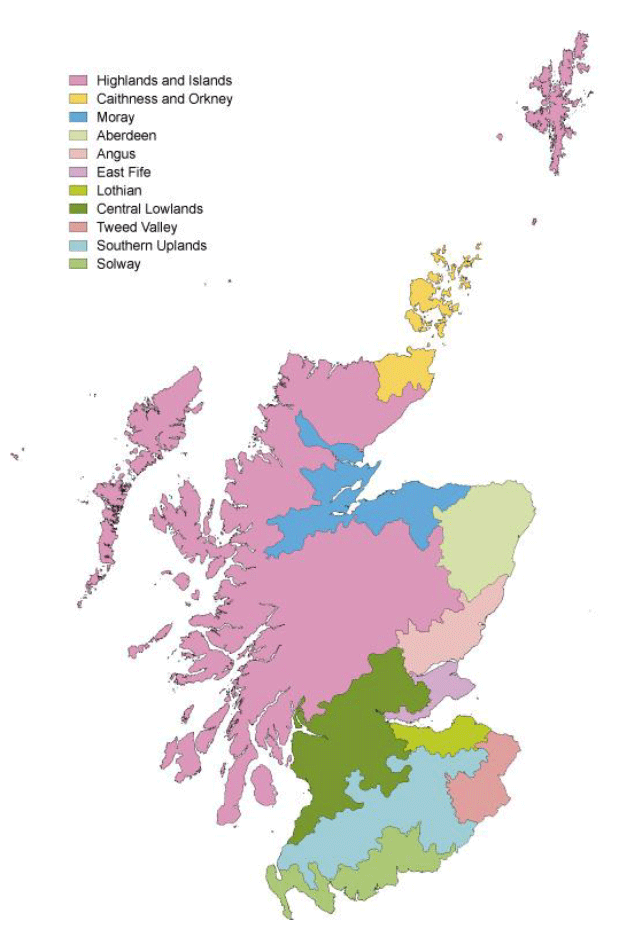Pesticide usage in Scotland: arable crops and potato stores 2016
This publication presents information from a survey of pesticide use on arable crops and potato stores in Scotland during 2016.
This document is part of a collection
Appendix 4 – Survey methodology
Sampling and data collection
The sample of farms used for this survey was the same as that for the Arable Crops 2016 survey. Using the June 2016 Agricultural Census (9), a sample was drawn representing arable cultivation in Scotland. The country was divided into 11 land-use regions ( Figure 8). Each sample was stratified by these land-use regions and according to holding size. The holding size groups were based on the total area of arable crops grown. The sampling fractions used within both regions and size groups were based on the areas of relevant crops grown rather than number of holdings, so that smaller holdings would not dominate the sample.
Data relating to pesticide use in potato stores were collected from all potato growers encountered in the arable sample, either during an on-farm or telephone interview, or via e-mail or fax. In instances where the potato land was let, and storage was on a separate holding, the potato grower was contacted individually to obtain storage details. Data were collected for all potatoes stored by these growers, not just for those crops grown on the holdings sampled. Therefore the sample of stored potatoes relates to a greater area of potato cultivation than that for which field pesticide treatments were collected in the 2016 arable pesticide survey report. In total, data were collected from 65 growers. The crops grown by these growers represent 25 per cent of the total 2016 potato crop census area.
The data collected included the areas of seed and ware crops grown, quantities of potatoes sold and stored, storage type, storage method and post-harvest pesticide applications at crop lifting and during storage. Fungicidal seed treatments applied prior to planting are included in the arable crop report.
Figure 8 Land use regions of Scotland (11)

Raising factors
National pesticide use was estimated by ratio raising. This is a standard statistical technique for producing estimates from a sample. It is the same methodology used by the other UK survey teams and has been used for all historical datasets produced by the Pesticide Survey Unit, allowing comparability over time. The sample data were multiplied by raising factors ( Table 10). These factors were calculated by comparing the sampled crop area to the areas recorded in the Agricultural Census within each region and size group. An adjustment ( Table 11) was made to the ware fraction to correct for the potatoes grown as seed that were then designated as ware. A second adjustment ( Table 12) was made to align the survey estimates of total tonnes stored with production estimates provided by AHDB Potatoes.
Due to the low numbers of potatoes grown and sampled in some geographic regions, stored data were amalgamated into four regions to allow more robust estimation of pesticide use: the North (Highlands & Islands, Caithness & Orkney, Moray Firth and Aberdeen), Angus (the main potato growing area in Scotland), Central (East Fife, Lothian and Central Lowlands) and the South (Tweed Valley, Southern Uplands and Solway).
Changes from previous years
There were no changes in methodology from the previous surveys presented as comparisons.
Contact
There is a problem
Thanks for your feedback